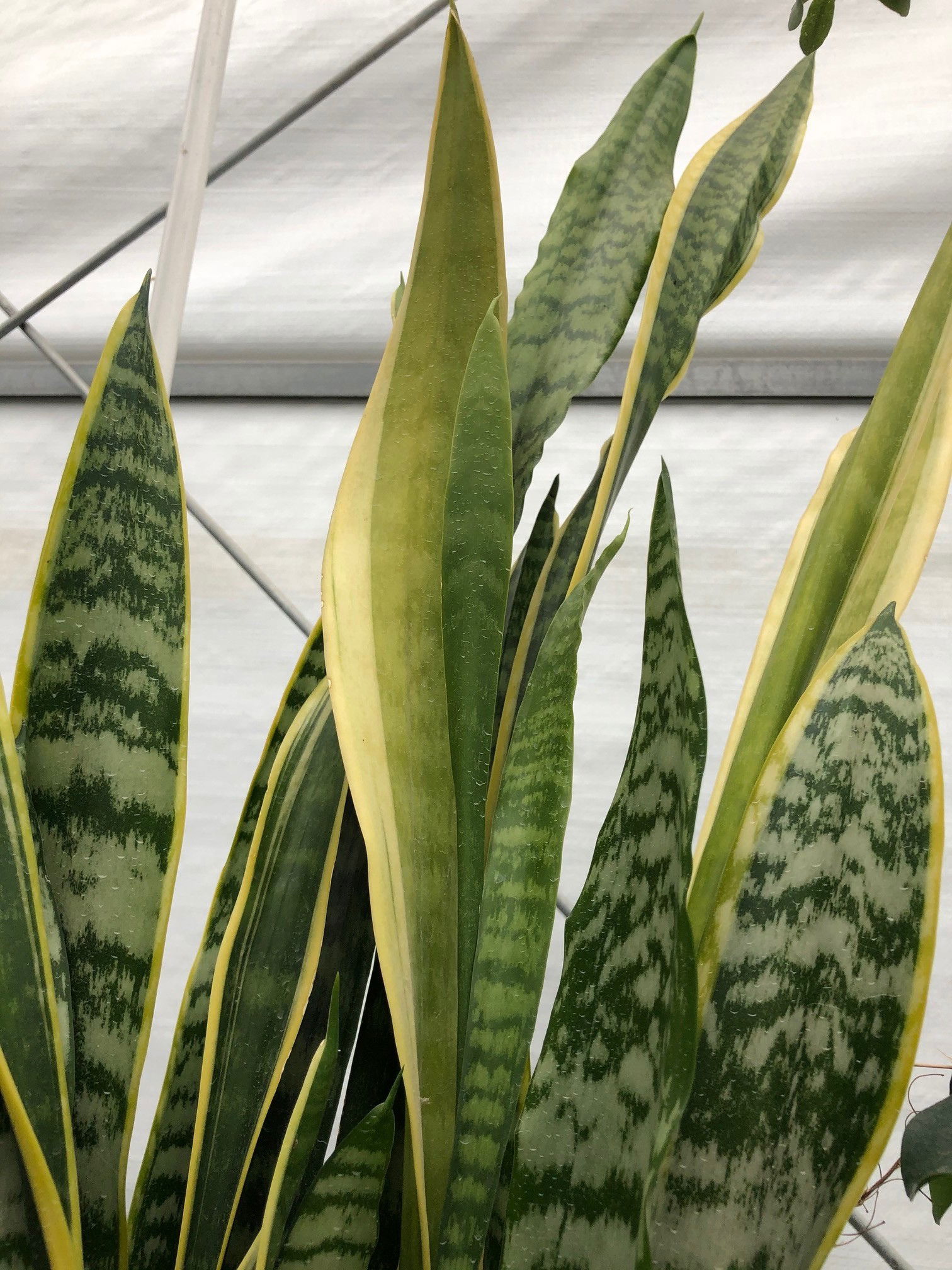Snake Plant Leaves Turning Yellow Fundamentals Explained
Wiki Article
Snake Plant Leaves Turning Yellow Can Be Fun For Everyone
Table of ContentsSnake Plant Leaves Turning Yellow - TruthsThe Snake Plant Leaves Turning Yellow StatementsSnake Plant Leaves Turning Yellow Fundamentals ExplainedThe 6-Second Trick For Snake Plant Leaves Turning YellowThe Buzz on Snake Plant Leaves Turning YellowSome Of Snake Plant Leaves Turning Yellow
Many signs of origin rot aren't noticeable to the outside of a plant, besides one indication yellowing leaves. When a snake plant has yellow leaves, this is usually an indication of overwatering resulting in origin rot. Snake Plant Leaves Turning Yellow. When yellow, the fallen leave is basically dead because it's not getting any type of nutrients from the decomposed originsThe most effective way to examine if the plant requires watering is to stick your finger one inch right into the dirt. If the dirt is wet, you do not need to water it. If the dirt is bone completely dry, it's time to water the plant. Snake plants actually function best in clothes dryer conditions than moist ones, so you must just sprinkle your snake plant once every 7-10 days.
Instead, the natural sunlight must be indirect. This indicates that if your snake plant remains on a windowsill or surface that is continuously in the sunlight, this is probably the reason for the yellowing fallen leaves. Yellow fallen leaves indicate that the plant is melting from the sunlight, which after that ultimately turns brownish and crunchy.
4 Simple Techniques For Snake Plant Leaves Turning Yellow
The sunlight will then focus on certain components of the fallen leaves, resulting in charred leaves. House plants call for uniformity to thrive.Any unexpected adjustments in these demands, specifically the temperature level, can result in the stress and anxiety of a plant. That's right tension from extreme adjustments in temperature level causes yellow fallen leaves. The main factor to stay clear of putting your snake plant via constant temperature modifications is that it entirely impacts the dissipation process.
:max_bytes(150000):strip_icc()/snake-plant-turning-yellow-db3aea336f4f46e6b2b95137e34b10b3.jpg)
Excitement About Snake Plant Leaves Turning Yellow
When over-fertilized, the fertilizer will do a couple of things. It will either melt the leaves, causing them to turn yellow, or it will soak up excessive wetness from the soil. This will prevent the plant from taking in the moisture it needs to make it through, which essentially causes a dehydrated plant.If you think you might have over-fertilized your serpent plant, it's ideal to leave the plant alone for a few weeks to months.

Some Known Factual Statements About Snake Plant Leaves Turning Yellow
I have actually seen my share of difficulties with the tough Serpent Plant, consisting of the mysterious yellowing of fallen leaves. Allow's dive right into the various causes behind this and just how to tackle them. Ironically, our good purposes can in some cases harm our Serpent Plant kingdoms. One typical source of yellow fallen leaves is. Our initial perpetrator is something that may stun you.Believe it or not, even our hardy Snake Plant kingdoms run this content out of their dietary supply after some time. When you initially get your Serpent Plant, it comes with a decent quantity of nutrients in its potting mix.
Here's a convenient guide for you: from the pot. for signs of fungi. using sterilized trimming shears. to the origins to stop future fungal growth. For a more extensive overview on repotting, have a look at our article on Snake Plants are tropical Going Here locals, and they like their temperature level stable and cozy.
Excitement About Snake Plant Leaves Turning Yellow
Freezing temperature levels can damage the leaves, and high temperatures or heatwaves can quicken water loss and damage the healthy proteins holding chlorophyll. When these healthy proteins are harmed, chlorophyll decreases, and the fallen leaves turn yellow. To treat this, guarantee your Snake Plant is positioned in a place in your home with even more constant temperature levels.The service is easy: move your Snake Plant to a pot with adequate drain openings. In my experience, the type of dirt you use for your serpent plant is critical.
Also the sun-loving serpent plant has its limitations. Prolonged exposure to direct sunshine damages the cells of the leaves, leading to. It's the plant's way of stating it's had a bit too much sunlight! To ease this, move your snake plant to a spot with. Your serpent plant will certainly thanks for it.
The Only Guide for Snake Plant Leaves Turning Yellow

Bugs and fungal infections can suck the sap from the fallen leaves, robbing the serpent plant of nutrients and creating the leaves to transform yellow. The remedy? Put on manage the parasites and fungal infections. Right here's a fast overview to do it: neem oil from a horticulture store. the neem oil with water following the advised proportion on the plan.
Serpent plant leaves are susceptible to yellowing if the plant is not well looked his comment is here after. The yellowing typically signifies something is incorrect with the watering and other treatment techniques. What creates the yellowing, and just how do I fix it? Healthy and balanced serpent plants have a yellow tinting around the edges of their wide, vertical fallen leave blades.
Report this wiki page